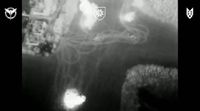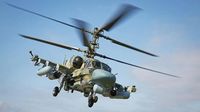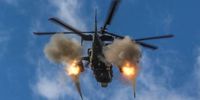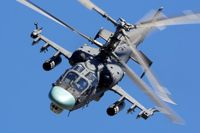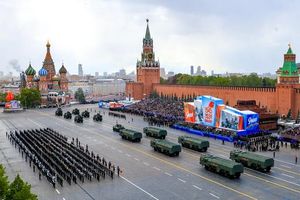In a significant military operation, Ukrainian special forces claimed responsibility for the destruction of four Russian helicopters in Belgorod Oblast, Russia, early on March 24, 2025. This attack was executed using U.S.-supplied High Mobility Artillery Rocket Systems (HIMARS) and showcased the ongoing tension between Ukraine and Russia amid diplomatic discussions.
The helicopters destroyed included two Mil Mi-8 transport helicopters and two Kamov Ka-52 gunships, aircraft notorious for their roles in anti-ground operations. According to the Special Operations Forces (SOF) of Ukraine, the operation occurred at a hidden staging area where Russian forces had prepared for rapid deployments or surprise attacks against Ukrainian troops.
The Ukrainian military intelligence agency (GRU) coordinated the precise strikes on these helicopters, which had been camouflaged in the enemy's rear. “The enemy once again thought that deep in the rear it was unattainable. We have once again proven that there is nothing unattainable for the SSO,” Ukrainian special forces stated in a Telegram post.
On March 23, unofficial reports first indicated the operation might take place, leading to increased speculation about Ukraine’s capabilities. The use of HIMARS in this instance highlights the reliance on advanced American technology, which has been a game-changer for Ukraine throughout the conflict. Ukrainian forces have successfully utilized this artillery system to hit high-value targets, marking a significant escalation in the operational tempo of the war.
Video footage released by the SOF demonstrated the striking of the helicopters, showing subsequent large explosions. This initiative follows a pattern where Ukraine has increasingly targeted Russian air capabilities to minimize threats posed by air support against its own ground forces.
Forbes noted that “the Ukrainians have a fast kill-chain, too—and it was dramatically on display in Belgorod.” The airpower differential has shaped much of this conflict, with Ukraine showcasing its ability to execute coordinated strikes deep behind enemy lines.
The attack came on a historically critical day, as high-level peace talks were taking place in Riyadh, Saudi Arabia, between the U.S. and Russia, aiming at addressing challenges related to maritime safety in the Black Sea. These discussions involved convoluted negotiations over energy supplies and military posturing in the region, providing a complex backdrop to military actions on the ground.
On the same date, the Ukrainian Air Force reported significant efficiency, claiming to have shot down 57 out of 96 Russian drones deployed across the Ukrainian sky. Such developments reflect the heightened aerial combat operations currently ongoing within the conflict, further illustrating the environment into which these helicopters were attacked.
The Ministry of Defense of Ukraine remarked post-meeting with U.S. representatives, emphasizing the motivation to achieve a “just and lasting peace” while understanding that military readiness is crucial during negotiations. “We are working to make that goal a reality,” stated Rustem Umerov, Ukraine's Minister of Defense.
As Ukraine continues to develop its military capabilities and operational strategies, the destruction of these four helicopters marks one of the most significant single losses of Russian airpower recorded to date in this ongoing conflict. The two Ka-52s, known for their prowess in ground attacks, were particularly problematic for Ukrainian forces, who have battled against their presence since the adoption of a more strategic military doctrine.
Reports indicate that the Russians had lost an estimated 120 helicopters overall throughout their protracted engagements in this three-year conflict. This particular incident, however, signals an operational shift for Ukraine as it successfully executes high-stakes missions far behind enemy lines.
The implications of such military maneuvers spark questions about the balance of air power on either side of the conflict. With Russian forces possibly experiencing a gradual depletion of their attack capabilities, the significance of the air engagement remains high. It serves as a pivotal moment, providing opportunities for Ukraine to regain initiative on the battlefield.
The operational tempo in the region appears to be increasing. As conversations regarding ceasefires and negotiations continue with U.S. and Russian involvement, Ukrainian military actions are likely to remain strategic both in terms of destroying enemy resources and sending signals of capability.
Strategically, every loss incurred by the Russian forces, particularly in terms of aviation, increases the challenges they face. The Kamov Ka-52s have been integral in providing intelligence and aerial support, allowing ground units to maneuver effectively. Addressing these losses could significantly alter the operational dynamics on the Eastern front.
Overall, this attack underscores a pivotal moment in the Ukraine-Russia conflict. With the backdrop of international military discussions ongoing, it highlights both the urgency and the unpredictability of the situation. As the region watches closely, the question remains as to how each side will adapt to the shifting landscape, both on the battlefield and in diplomatic arenas.
